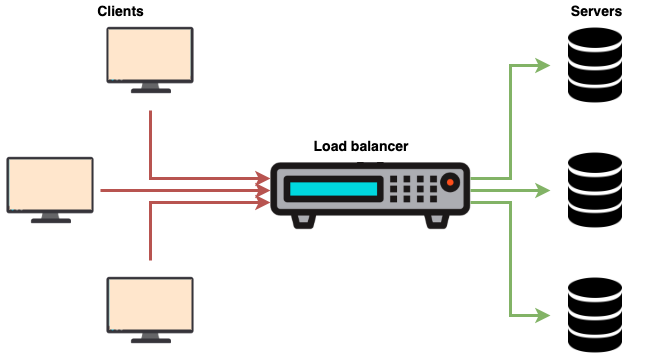Rayan Nik Tajhiz Company
Interruptions and slowness caused by traffic overload on the server are annoying when you watch an online movie on the Internet.

Interruptions and slowness caused by traffic overload on the server are annoying when you watch an online movie on the Internet. Load balancing refers to a technology for balancing the load of traffic on a server cluster. In this way, the traffic will no longer build up on a particular server to avoid any interruption/slowness in the data transfer.
The Barracuda Load Balancer is a secure data transfer controller that distributes the traffic over all servers. This balancer not only takes full control over the loading process but also offers security features and capabilities.
Primary feature of the Barracuda Load Balancer: Balancing in the 4th to 7th layers
The Barracuda Load Balancer undertakes the load balancing within the 4th and 7th layers by loading the SSL and other applications. The term load balancing here refers to balancing the traffic loads across a server cluster. The internal module of the load balancer utilizes the applications and services on a set of global servers (GSLB) to enable the load balancing across various geographical positions around the globe. Global servers load balancing (GSLB) refers to distribution of the load over a series of servers by combining the protocols to the 4th to 7th layers. The security module of the load balancer is responsible for protecting web applications against the OWASP Top 10 cyberattacks.
By investigating the traffic performance for the application delivery controller (ADC), the Barracuda ensures balanced distribution of the traffic load among servers. Indeed, ensuring the best load balancing scheme, the Barracuda increases the server’s capacity while minimizing the response time.
Application of the Barracuda Load Balancer: A powerful security layer for balancing complex applications of the organization
As a security and traffic control layer, the Barracuda Load Balancer prevents unforeseen challenges that could otherwise occur due to traffic overload. A portion of the employees’ productivity and performance level is controlled by the security and fastness of the actions that are done via the organizational network/Internet. For examples, sales persons use multiple applications to access a variety of data. Simultaneous use of multiple applications on a network can disturb the traffic load on the server.
As a rule of thumb, in a cyberspace, the performance is highly controlled by the available applications and server traffic intensity. In a world where an ever-increasing trend of software as a service (SaaS) is evident, the load balancer helps in seamless delivery of the application to the user. Therefore, this service represents a useful and effective security requirement to any organization where multiple systems and applications are active on the network.
Different types of the Barracuda Load Balancer: virtual, cloud-based, and hardware-based
The Barracuda Load Balancer comes in different types, namely hardware-based, virtual, and cloud-based load balancers. Hardware-based load balancers are those that can process several giga bytes of data from various applications. These are further equipped with an internal data visualizer that can integrate the load balancing into different MikroTiks. Software load balancers tend bring about savings in the cost and storage space as they need no particular software and equipment.
In general, the load balancing is offered in either of the following three schemes:
- 4th layer load balancing
In this type of load balancing, the traffic distribution is done with the help of protocols’ in the 4th layer, meaning that the load balancer routes based on TCP or UDP ports. At the 4th layer, the load balancer defines the network address instead of investigating the parcel content.
- 7th layer load balancing
In this type of load balancing, the traffic distribution is done by the protocols of the 7th layer, where the load balancer grants the highest OSI (Open Systems Interconnection) level. At this level, the HTTP headers and SSL indicators are evaluated.
- Global server load (GSL) balancing
On such a network, traffic distribution is performed among the 4th to 7th layers. The Barracuda Load Balancer is a GSL system.
Rayan Nik Tajhiz: the Barracuda Load Balancer with price guarantee and warrantee
When selecting a security and data transfer technology, it is highly important to have a product that is supported by robust persons and services to ensure secure service availability to customers. Support of the Barracuda Load Balancer by Rayan Nik Tajhiz tends to guarantee the security and responsibility of the product. Tens of thousands of companies around the world have relied on the Barracuda Load Balancer as the most popular load balancer in the world.
In addition, to purchase the load balancer, you can conveniently call our experts at the company via (+98) 21 88209219 (Ext. 222) to enjoy free-of-charge consultancy. As a vendor of security and network protection solutions, Rayan Nik Tajhiz offers training and installation, and set-up services for your network security solutions. By means of the Barracuda Load Balancer in the Rayan Nik Tajhiz, you can control the traffic load over the servers across the organization while establishing a powerful and cost-efficient protection for the server.

